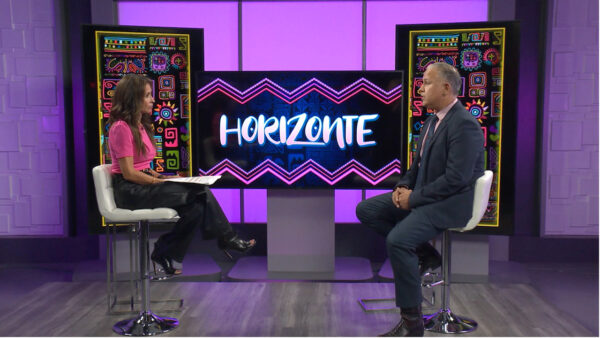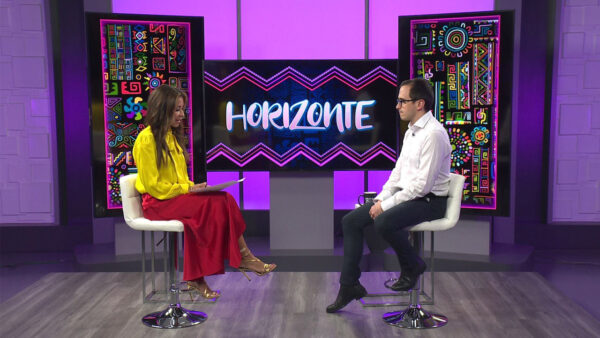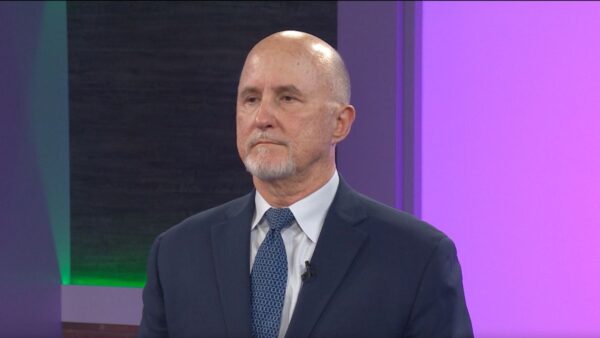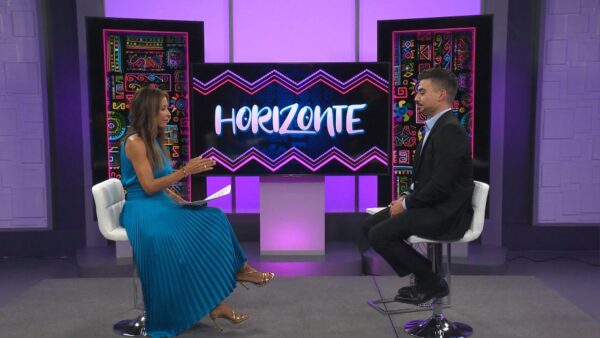The Bracero program brought millions of migrant Mexican workers to the United States from 1942-1964, offering them short-term labor in mostly agricultural contracts. An exhibit at the Calaca Cultural Center focuses on tools used by Braceros, as well as artifacts, photographs, and more. Director Marco Albarran discusses the exhibit and history of the Bracero program.
Richard Ruelas: The Bracero program brought millions of migrant Mexican workers to the United States from 1942 to 1964, offering them short-term labor in mostly agricultural contracts. There is an exhibit going on focusing on tools used by braceros, as well as artifacts, photographs, and more. Here to talk about it is artist Marco Albarran, curator of the exhibit, artist in your own right but curating this. What do we need to know about the Bracero program? What don't we understand about it?
Marco Albarran: The Bracero program was actually very complex, in terms of how much influence, many of the social activism that happened after that, including by now, art. It had an immense growth in the border parts of Mexico from the people coming through the border first and then crossing to the United States.
Richard Ruelas: And it's a personal story for you. Did you know much about the history of your father? Did he talk about it as you were growing up?
Marco Albarran: Not until later, I found out that he was actually a bracero and some of the experiences that he had, because I worked with him in the 70s going through the fields, too, so he used to tell me all the stories. That's when actually we met with Caesar Chavez, during that time. He was telling me all the stories of when he was a bracero.
Richard Ruelas: Also, your father came through the bracero program and was able to stay and remain a farm worker.
Marco Albarran: He was actually recruited three times in Mexico. It was in 1946, the first time, 1951, the second time and then 1960, the third time.
Richard Ruelas: So he may have not wanted to tell the stories, you're probably glad he did and he was able to -- he had some photographs and artifacts that become part of this exhibit?
Marco Albarran: Right, right. And we included art. When I put together the exhibition, I was actually asking the artists if they had some kind of connection to the Bracero program when they were creating the art.
Richard Ruelas: So yeah, we're looking at your family arriving in California. So back and forth. And also what should we experience? What do you think the art lets us see? As we are going through --
Marco Albarran: There's personal stories for some of the artists that also when they asked their parents, their father, because many of the mothers were part when they were coming as families. But most of them were just dads that came and went through the program, but those are the stories that they're basically started telling through the art and some of the personal stories that also were written by the artists.
Richard Ruelas: And some of the artifacts that survived and here you found -- I mean, I imagine this was a find for you both as an artist and as a son.
Marco Albarran: It's a treasure for me. And that's one of the things that I'm trying to emphasize is that little things like this that are treasures of the family, they're also part of the history and one of the things I'm trying to do with the exhibition is to show that we are part of the American history, that we are part of the American experience.
Richard Ruelas: But you're also showing us this as an artwork. This is a piece of art. So this was your father's lunchbox.
Marco Albarran: Right. It's one of the lunchboxes. I have another one at the exhibition as well.
Richard Ruelas: And inside are some of the tools, there's a short-handled hoe that's one of the artifacts --
Marco Albarran: Right, right --
Richard Ruelas: …and inside here you even have some --
Marco Albarran: Yeah, I have some clippers that he used when cutting lemons. And the photograph that is over there is showing basically when he was in L.A., was actually before Disneyland developed and that's why they call it Orange County because there was a lot of citrus in that area there.
Richard Ruelas: I mean, looking at this again, as a piece of history and an artifact but you can -- looking at it as art, you can sense the labor in it, the intensity. What do you see when you look at your father's clipping tools?
Marco Albarran: For me, our memories, because I mean, I actually worked in the fields, too, and used many of his tools, as well. So for me, it's a very personal experience.
Richard Ruelas: So the artists you brought in, what kind of work did they create?
Marco Albarran: They created from paintings to sculptures to graphic work, paper art, so it's basically all mediums. And I'm really happy that they participated, because this exhibition is going to be part of another exhibition next year, in collaboration with the Smithsonian, a traveling Bracero exhibition. So, that's one of the reasons I wanted to make sure that this exhibition was so strong.
Richard Ruelas: Do we see the artifacts, is it segmented out? As we've shown the gallery, on the screen, we've seen some sort of political statements, or almost whimsical pieces next to artifacts.
Marco Albarran: Well, actually, in the entrance to the gallery, you're going to see a statue made by Zarco Guerrero of Cesar Chavez, because Cesar Chavez was influenced by this program, even though he didn't like the program and rightly so because they abused many of the workers. But it was influenced in terms of how he got started. So that's how basically, that's what you're going to see entering in the gallery.
Richard Ruelas: But it's interspersed --
Marco Albarran: Art and artifacts and the like.
Richard Ruelas: And I guess at the end of it we see that it's part of the Latino experience, part of the American experience that has created this.
Marco Albarran: Exactly, and that's one of the things I'm trying to emphasize that there's a history there that we still need to capture.
Richard Ruelas: And you helped us capture it tonight and at the exhibition, which we put up the address, 2811 N. 7th Ave. Willo North Gallery. Appreciate your being here. Thank you so much.
Marco Albarran: Thank you for inviting me.
Richard Ruelas: That's our show for tonight. From all of us here at eight and "Horizonte," I'm Richard Ruelas. Have a good night.
Marco Albarran:Director, Calaca Cultural Center;




















